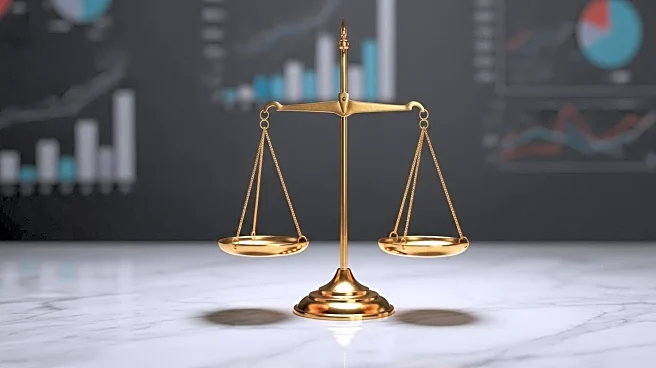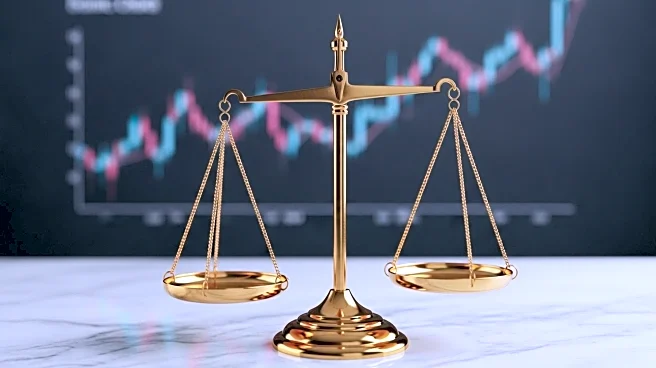What is the story about?
What's Happening?
Federal Reserve member Miran has indicated a closer alignment with international peers regarding economic projections for 2026, despite maintaining a conservative outlook. Miran expressed optimism about the U.S. economic growth, suggesting a potential 3% growth rate for the latter half of 2025 into 2026. He noted that the current monetary policy might be overly restrictive by 150-200 basis points. Miran also highlighted expectations for shelter inflation to decrease over the next 6-12 months. The Fed's approach to rate cuts is influenced by the belief that the neutral rate is being lowered by tax policies and immigration. Miran advocates for the Federal Reserve to move closer to a neutral stance within the next six months, potentially through a series of half-point rate adjustments.
Why It's Important?
Miran's statements reflect a significant shift in the Federal Reserve's approach, potentially impacting U.S. economic policy and financial markets. A move towards a neutral monetary policy could stimulate economic growth by reducing borrowing costs, benefiting businesses and consumers. However, the conservative outlook suggests caution, as the Fed balances growth with inflation control. The alignment with international peers may enhance global economic stability, influencing foreign exchange markets and international trade. Stakeholders such as investors, businesses, and policymakers will closely monitor these developments, as they could affect investment strategies, corporate planning, and economic forecasts.
What's Next?
The Federal Reserve's potential shift towards a neutral policy stance will be closely watched by financial markets and economic analysts. Future decisions on interest rates will depend on economic indicators such as inflation and employment data. Stakeholders will anticipate the Fed's next moves, which could include incremental rate adjustments. The broader economic impact will depend on how these policies influence consumer spending, business investment, and overall economic confidence. International reactions, particularly from major trading partners, will also be significant as they adjust to changes in U.S. monetary policy.
AI Generated Content
Do you find this article useful?














